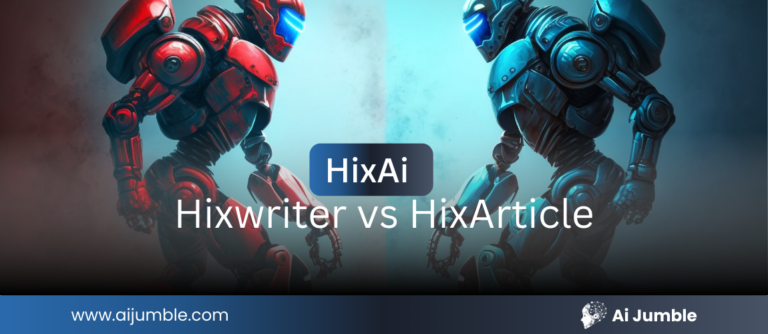Within the ever-changing field of artificial intelligence, the fascinating field of generative AI has emerged as an important topic. What was once just a tool has evolved into a creative powerhouse that can completely change the way people interact with computers and the way content is created. To know more about this wonderful technological advancement, here we will dig into the complex meaning of generative artificial intelligence (AI) in this article, carefully examining its underlying workings.
We will discover a plethora of advantages as we explore this technical wonder that might completely change the way we interact with the internet. But no innovation is ever unaccountable, therefore we will openly address any possible downsides that come with this powerful technology.
So, let us take you on this thought-provoking adventure as we explore the various ways that generative AI is influencing our changing relationship with modern technology.
What is Generative AI?
Fundamentally, generative artificial intelligence is a branch of AI that concentrates on content production. In contrast to conventional AI systems, which are tailored for certain tasks, generative models are constructed to produce new material on their own. These models—which are frequently based on neural networks—learn links and patterns from enormous datasets, allowing them to provide a variety of unique results, from crafting art to generating human-like text, They revolutionize content creation, pushing the boundaries of what machines can achieve in the realms of innovation and expression.
How It Works: The Creative Alchemy
By utilizing cutting-edge methods like Variational Autoencoders (VAEs) and Generative Adversarial Networks (GANs), generative artificial intelligence makes use of data-driven pattern recognition. These deep learning models are revolutionizing the way robots perceive and produce content by analyzing and learning complex patterns to generate creative material on their own. Both of these are explained below.
1. Variational Autoencoders (VAEs):
Learning the underlying structure of the incoming data is the main goal of VAEs. VAEs create a new material by sampling from a latent space that is created by mapping data. The attractiveness of VAEs is their capacity to explore various latent space areas and provide a variety of outputs.
2. Generative Adversarial Networks (GANs):
A generator and a discriminator are caught in an endless dance that drives the interesting dynamic of GANs. Content is created by the generator, and its credibility is assessed by the discriminator. Because of this continuous process, the generator keeps becoming better and better, producing material that is harder and harder for the discriminator to tell apart from actual data.
Benefits of Generative Artificial Intelligence: Unleashing Creativity
1. Content Creation:
Content production has been reinvented in several disciplines by generative AI. Beyond the bounds of human imagination, technology unlocks a world of limitless possibilities, enabling the creation of realistic pictures, films, music, and artwork.
2. Innovative Design:
Generative models help produce new designs in domains like architecture and graphic design. With the ability to explore a large creative environment, these models may push the bounds of creativity and provide architects and designers with fresh viewpoints.
3. Personalized Experiences:
A key component of user experience personalization is generative AI. The technology increases user engagement and happiness by customizing material for each particular user, whether it is in gaming, entertainment, or e-commerce.
4. Scientific Advancements:
Generative AI helps in hypothesis generation, experiment simulation, and even outcome prediction in scientific research. This quickens the rate of scientific advancement in disciplines like biology, physics, and chemistry.
Dangers and Ethical Concerns: Navigating the Shadows
Although generative AI has great promise, there are drawbacks as well. We must address the possible risks and moral dilemmas related to this tremendous technology while we consider its advantages.
1. False information and deep fakes
Because generative models may produce extremely realistic content, there is reason to be concerned about deepfakes, which are photos or movies that have been altered to convincingly portray events that never happened. Misinformation and the deterioration of trust are seriously threatened by this.
2. Biased Outputs:
Because generative models get their knowledge from pre-existing datasets, they may produce biased information that reinforces and amplifies preexisting prejudices. This brings up ethical issues, especially for face recognition and recruiting applications.
3. Privacy Invasion:
Privacy invasion problems are raised by the technology’s ability to produce lifelike representations of nonexistent people. Applications that generate realistic false profiles using deepfakes have the potential to be misused and result in identity theft.
4. Dangers to Security:
Security risks across several domains might arise from the malicious use of generative artificial intelligence (AI), which could be used to produce fake papers or realistic phishing material.
Wrapping Up:
At the cutting edge of technological advancement, generative artificial intelligence has both enormous creative potential and possible drawbacks. We must find a balance between utilizing this technology’s creative potential and putting safety measures in place to lessen its hazards as we are still exploring this new region.
Most of the future predictions point to a world in which generative AI transforms businesses, enhances creativity, and opens up and opens up previously unexplored creative potential. But this path has to be led by a dedication to moral application, openness, and a watchful eye for possible threats that might be hiding in plain sight. Through comprehension, acceptance, and conscientious use of Generative AI, we may set off on a revolutionary expedition that recasts the standards for human-machine cooperation and unleashes previously unseen creativity on the planet. What are your perspectives on the delicate balance between innovation and ethical considerations in the realm of generative AI? Feel free to share your thoughts below in the comment section.
Dive deeper into the fascinating world of artificial intelligence with AI Jumble! Explore our comprehensive portal packed with Ai tools directory, informative articles, interactive features, and newly launched web stories.
Also, read from our portal:







